The Future of Telehealth: Evolving COVID Perspectives Offer Clues
New data comparing past vs. present experience with telemedicine during the pandemic uncovers insight on how patients, doctors, and payers view the market post-COVID.

In June 2020, Ipsos delivered market research that defined how COVID-19 was forcing pharmaceutical companies to adopt new physician interaction models. About a year into the pandemic, we wanted to see how different stakeholders are currently experiencing telemedicine and what the they believe the future holds for its use. This article presents some of those findings, co-sponsored by m360 Research, and based on interviews with a combined 2,500 healthcare providers (HCPs), patients, and payers.
Telemedicine usage as a proportion of weekly patient appointments is at nearly half of June 2020 levels. Psychiatrists are continuing to adopt telemedicine at extremely high levels, while dermatologists use it sparingly (see Figure 1 and Figure 2 below). Utilization is likely to continue dropping as the vaccine rollouts continue.
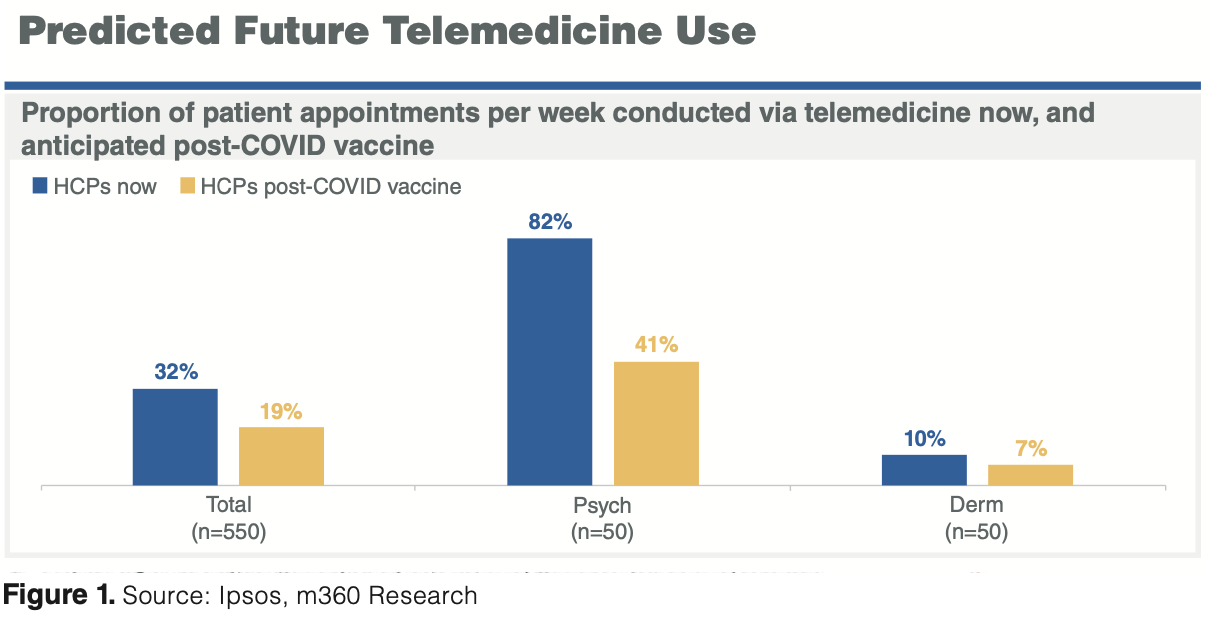
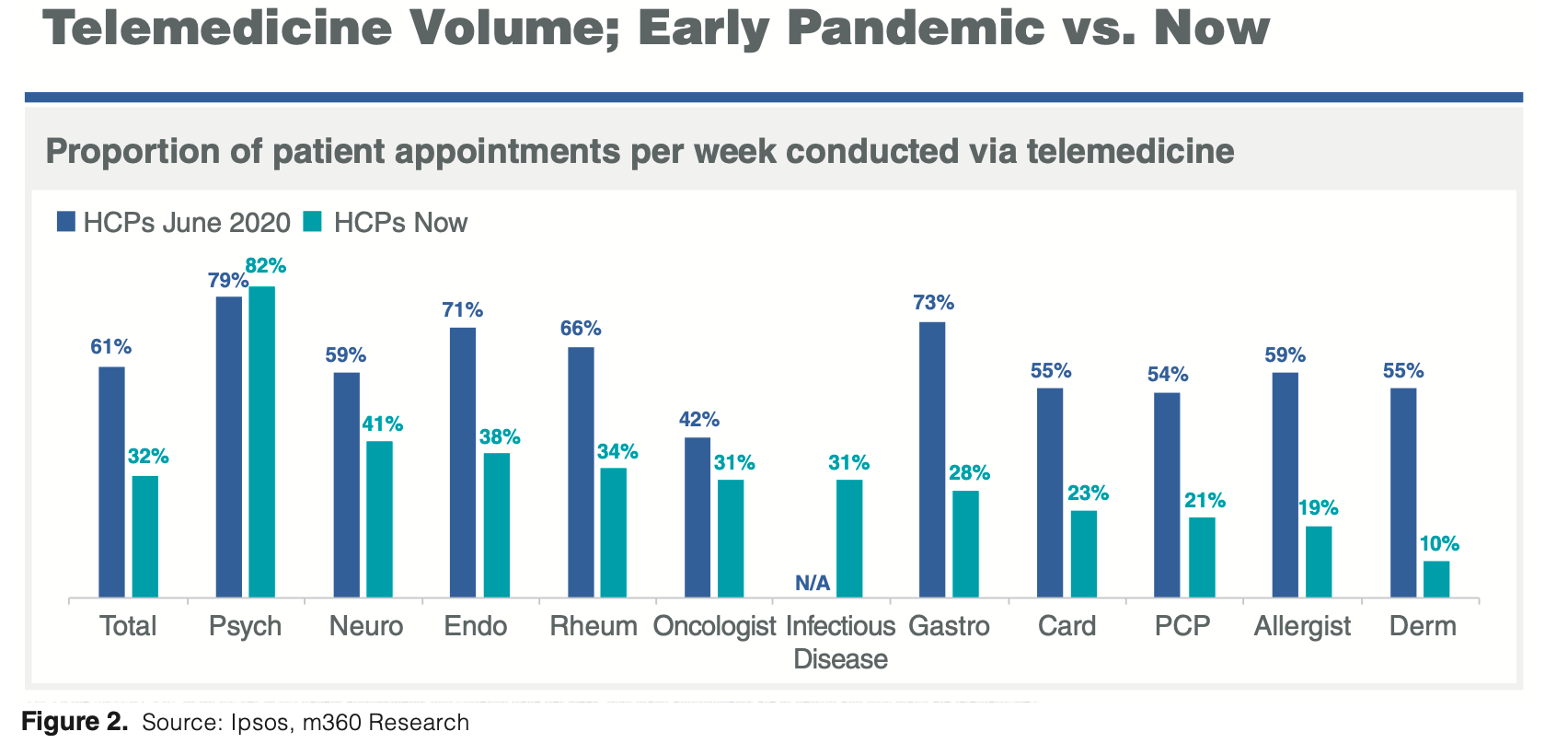
Interestingly, doctors and patients both think that the other party is responsible for selection of most telemedicine appointments (see Figure 3 below). Our hypothesis is that physicians aren’t necessarily aware of how patient appointments are scheduled, so if they are not personally requesting a telemedicine appointment, they assume it was the patient’s choice. From a patient’s perspective, if telemedicine is offered by the scheduler, they might be interpreting that as the physician deciding for them.

Overall, patients show much higher levels of satisfaction, compared to physicians (see Figure 4 below). While HCPs expect that patients are having a more satisfactory experience, they significantly underestimate just how satisfied patients really are. This large gap in is likely due to pain points that are felt by physicians, but not by patients. HCPs generally believe that telemedicine makes it harder to develop relationships with patients, diagnose them, and start them on new therapies. Patients, meanwhile, generally do not share these sentiments. Payers seem to align more closely with HCPs, as those interviewed regularly expressed concerns about the quality of care, outside of routine primary care visits.
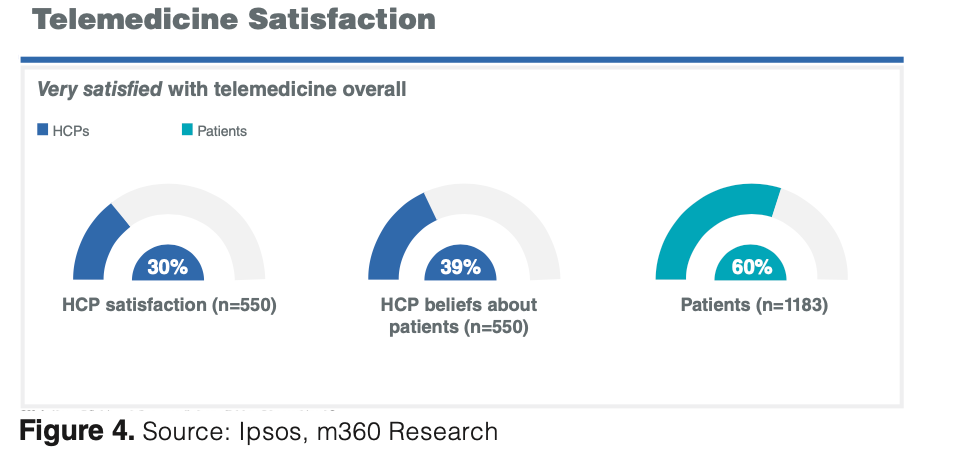
Patients also exhibit higher satisfaction levels for each telemedicine delivery platform, with HCPs holding especially negative views of telephone-only appointments (see Figure 5 below). While telephone, commercial videoconferencing, and specialized platforms are used fairly equally for now, the payers we spoke with anticipate only covering platforms that are HIPAA compliant, due to security concerns with commercial videoconferencing platforms. They believe that physicians and patients have now had ample time to adapt to specialized platforms and no longer need the “no-barriers” approach to telemedicine that was implemented at the start of the pandemic. A Zoom or FaceTime call with your doctor is likely soon to be a thing of the past.
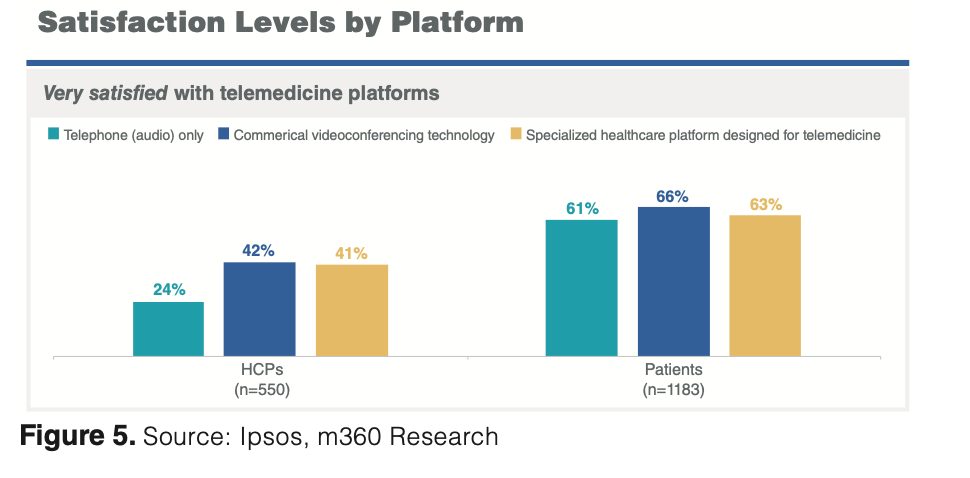
Looking toward the future, telemedicine is still expected to account for one-in-five appointments, with psychiatrists expecting to continue using more telemedicine than other specialties. The reduction in overall telemedicine rates will likely coincide with the formation of a new “typical” telemedicine patient. Physicians and payers agree that telemedicine appointments will generally be used on returning patients, those with mild/stable diseases, and those attending routine follow-up appointments.
Payers also see psychiatry and behavioral health appointments as a natural fit. Few envision severe, unstable, and undiagnosed patients being good candidates for future telehealth visits. Interestingly, patient age does not appear to be much of a driving factor.
With telemedicine here to stay, albeit in a reduced capacity moving forward, pharma companies should continue and increase efforts to support physicians’ telehealth business. HCPs interviewed frequently mentioned product samples as one of the biggest pain points with their telemedicine patients. Physicians desire broader access to digital sample coupons, which patients can redeem at the pharmacy, or samples that can be directly sent to patients. Digital patient support materials are also helpful tools for physicians.
Ipsos’ research confirms that despite being on the path back to normalcy, telemedicine will be a key part of healthcare for the foreseeable future—even if it is disincentivized by payers for many patient types. Though physician satisfaction levels trail those of patients, there is still a large cohort of providers that are quite happy with telemedicine. Could these providers strongly favor medications that do not require in-office administration or monitoring post-COVID? Or will their prescribing habits remain unchanged from pre-pandemic levels?
How each doctor chooses to incorporate telemedicine to their practice long term could impact not only prescribing, but also their interaction preferences with pharma. It will be important to track how these preferences continue to change as we emerge from the pandemic.
About the study
These are some of the findings of an Ipsos poll of 550 healthcare providers, 2,100 patients, and 10 payers—conducted in partnership with m360 Research—between Jan. 28 and Feb. 8, 2021. For a more in-depth look and commentary on this research, view the recording of Ipsos’ recent webinar on the topic.
Matthew Heffler, Research Manager, Ipsos
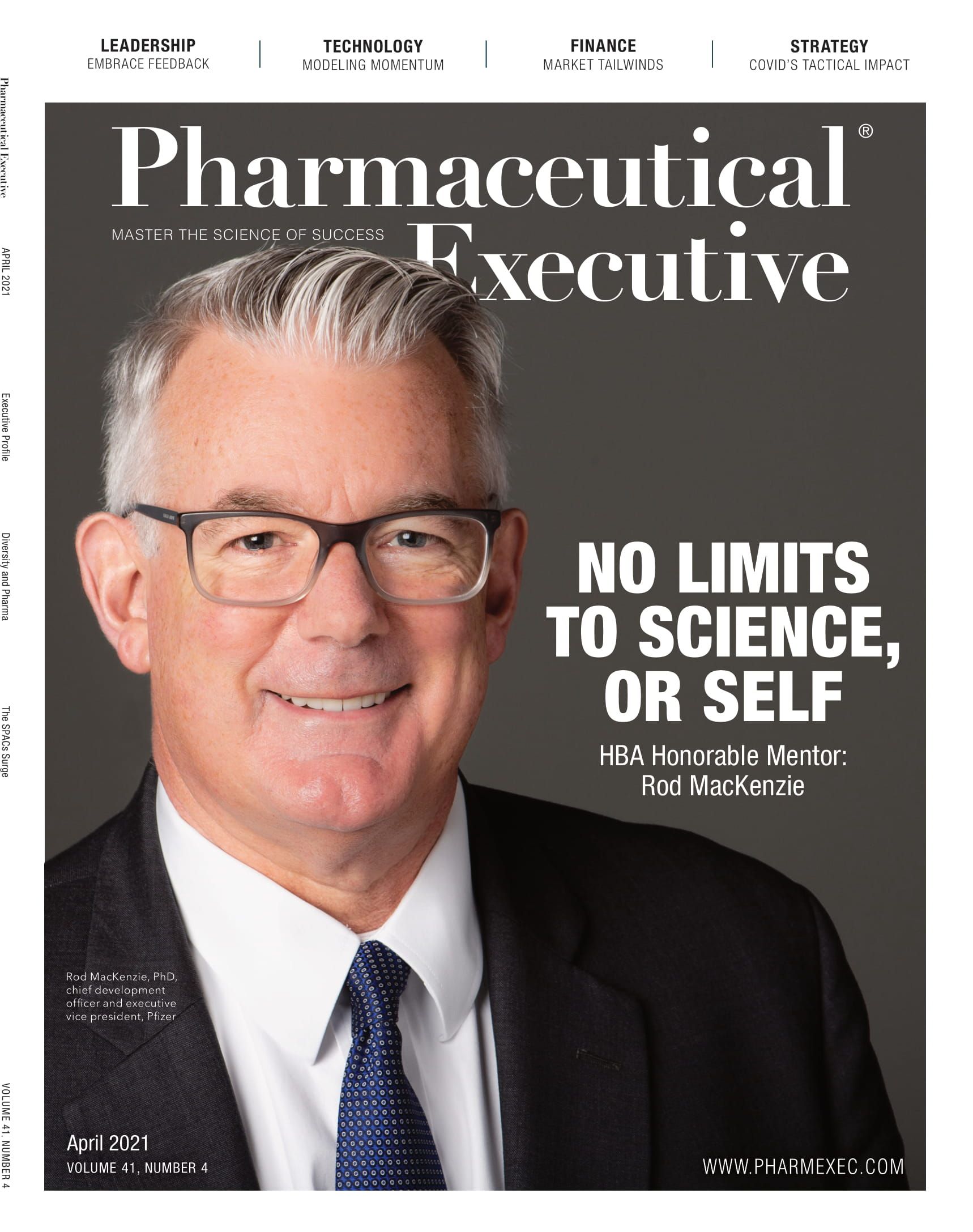
Addressing Disparities in Psoriasis Trials: Takeda's Strategies for Inclusivity in Clinical Research
April 14th 2025LaShell Robinson, Head of Global Feasibility and Trial Equity at Takeda, speaks about the company's strategies to engage patients in underrepresented populations in its phase III psoriasis trials.